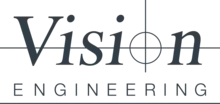DRV STEREO CAM – YOUR TOP 5 QUESTIONS ANSWERED
It’s been a very busy week since we launched DRV Stereo CAM. Customers all around the world have been getting in touch with our sales teams.
So we thought we’d take the opportunity to sit down with International Product Manager, Stephen Sanderson, to share some of the most common questions asked and get the answers from the expert!
First, let’s deal with a popular question from existing Lynx EVO users.
Q: Steve, a number of customers have expressed an interest in adapting their existing Lynx EVO with the Stereo CAM module, but wanted to know if they would still be able to use the 360° rotating viewer. Is this possible?
A: Absolutely! The viewed magnification of the system is higher than when used on a Lynx EVO, but you are still able to use the oblique viewer to look around your subject without touching it.
Next up – Many of the people we spoke to were hugely excited about the ability of sharing 3D stereo images and had a number of questions around this.
Q: The real-time sharing of images sounds interesting, it could really make a difference when we need a quick decision on adapting a prototype or need help solving a potential issue. Can you explain in a little more detail how it would work?
A: Real-time sharing of 3D images is definitely getting a lot of interest at the moment.
It’s really simple and can work on any scale. Simply put you connect the output from one DRV viewer to the input of another. Then the viewer of the second can see exactly what is being looked at on the first.
Units can be connected by internet, wireless and/or cable, meaning connections to your team members and colleagues can be made wherever they are located. Once connected, they are able to see exactly what you are looking at in real-time. You can also capture 3D images during your discussions to help document any decisions taken during your call.
Q: I would like to be able to share 3D images with our quality management team so that they can review when they have a moment or simply add them to the relevant documentation, what is the best way to do this?
A: That’s an easy one to answer! Sharing your 3D images is that same as sharing any other files. Simply capture your image and share via email, USB stick, or in the case of large file sizes, share to a central collaboration space, or via a file transfer site.
Q: Although there are times when sharing 3D images is important, I also have some instances where a 2D image is all that is necessary or where colleagues will not have access to a DRV viewer. Am I able to capture and share 2D images using DRV Stereo CAM?
A: Thanks for asking that. The images that are captured by DRV Stereo CAM are saved as PNG files and not in a special format. This means they are accessible for use with 2D systems and with external software as soon as they are taken. These images can then be viewed on a PC, tablet or mobile phone.
And lastly, we had a number of questions regarding placement of the Stereo CAM module in relation to the DRV viewer. The question below is a great example.
Q: I work with a laminar flow cabinet, would I have to place both the microscope and the viewer in the cabinet?
A: One of the great features of the DRV Stereo CAM is the ability to separate the Stereo CAM section and the DRV viewer. You can place the Stereo CAM unit in the laminar flow cabinet with your sample and the DRV viewer can be outside of this on a convenient workbench. Then connect the two with the HDMI cable and your sample will display in 3D. It is possible to onward connect to an extra viewer outside the clean room giving the 3D view to anyone.





